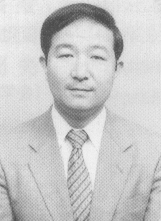
 |
Takashi MatsuyamaProfessor,Kyoto University |
As my curriculum vitae shows, I spent time at various universities throughout Japan as my career developed, including a few years in the United States. In April 1995, I returned to my alma mater, Kyoto University, as a professor. During my career, I have met many distinguished people from a variety of research backgrounds, with different policies and visions for student education and human life. I believe these explorations have helped broaden my character, both as a researcher and a person.
As a result of these such experiences, I have been involved in various research projects, including image processing (edge preserving smoothing), pattern recognition (pattern classification based on the Dempster-Shafer probabilistic model), image understanding (aerial image understanding systems), artificial intelligence (geometric inference and cooperative distributed systems), KANSEI information processing (color design system) and parallel processing (recursive torus architecture for MIMD machines). Recently, I have begun conducting new research into multimedia information processing, including the development of an image database, digital library and interactive visual media environments based on cooperative distributed processing.
Some of my close friends know very well that the title of my master thesis was "Analysis of the Crayfish Flexor System for Escape" and my first scientific paper was entitled "Coordinated Excitation of Flexor Inhibitors in Crayfish." As these titles indicate, I am very interested in living creatures (I have been keeping tropical fish at home for more than 25 years). In fact, I wanted to join the Bionics Laboratory (as it was called then) of the Electrotechnical Laboratory after graduating from my master's program.
At RWCP, my activities have been extensive as well. Until last year, I was engaged in the study of cooperative distributed image understanding as a member of the Image Understanding Workshop. Specifically, I developed two systems: a multi-agent region segmentation system where each region of an image was considered an agent and the image was paititioned into disjoint regions through cooperation between region agents, and a target tracking system whose objective was to detect and track moving objects in video images through the use of cooperative processing between background subtraction and template macthing.
This year, I started a study on real time parallel image understanding. Our group has been engaged in the hardware and software development of RTA/1, a parallel image understanding machine based on the recursive torus architecture. Last year, we discussed and exchanged ideas on massively parallel machine software with Dr. Ishikawa, chief of the TRC Massively Parallel Software Laboratory. Based on his suggestions, we started a new project for the design and development of parallel programming languages for parallel image understanding based on MPC++, a parallel programming language being developed by Dr. Ishikawa's group.
As a member of the Database Workshop (established in 1994), I also paiticipated in another initiative to develop an image database for the scientific and objective evaluation of various image analysis and understanding algorithms that will be developed by RWCP. The data model and software interface for the proposed image database are now being designed based on IUE (Image Understanding Environment). IUE is an extensive software environment for image understanding, and was developed under the leadership of the United States, in cooperation with Europe and Japan. Once completed, we expect the model and interface will be extensively used throughout the world.
A full two years have pased since our univeristy was given the subcontract from RWCP. I would like to positively promote this research, so that it will bear significant results.